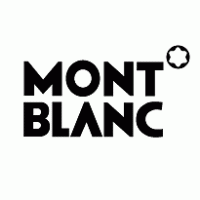I was recently presenting logo concepts to a lovely new client, as they are an established company we’ve explored two main avenues of either refreshing the brand or developing a new concept altogether. I don’t want to go into details just yet but while presenting one of the new logos, the concept or logo design rationale wasn’t overtly obvious and a member of the team suggested that it was maybe too abstract and wasn’t clear enough. This got me thinking…
Does a logo concept or rationale need to be overtly obvious?
I don’t want to dive too deep into the psychology of logo design at this point but shapes are quite important. Our brains are wired to recognise and memorise shapes and that’s how humans learn. There is a distinction between a logo type and a logo mark but if you think about it, letters are shapes too.
Ok, I’m getting off the mark here. Let’s get back to logo design rationale.
The FedEx logo is one of the best examples of psychology in logo design. The arrow and measuring spoon aren’t overtly obvious at first but when someone points it out the penny drops or if you notice it on your own you can’t help feeling a little smug.
I can carry on with a few other examples but I want to show you one of my favourite logo designs which will help me answer this question.
Montblanc is an established brand which has graced our presence for over 100 years, I think it was once voted as one of the best logos of all time. Not bad Montblanc. Moving along, the logo mark is a white star with softened edges encompassed in a circle. It’s beautifully applied to the top of their pens and applied as a badge across products. It’s simple, elegant and recognisable. To the company, the shape represents their commitment to the highest quality and craftsmanship (remember that for the link later on…)
That’s nice and all, but do you know what the Montblanc logo means?
 The Montblanc star mark was created in 1913 when it became the logo and trademark and all writing instruments created would carry the rounded star mark. The shape represents the snow-covered peak of the highest mountain in Europe, Mont Blanc.
The Montblanc star mark was created in 1913 when it became the logo and trademark and all writing instruments created would carry the rounded star mark. The shape represents the snow-covered peak of the highest mountain in Europe, Mont Blanc.
Obvious? Not at all unless you are a logo history geek (jokes). My point is that there are many iconic logo designs that appear to have no meaning at all or the meaning is not overtly obvious.
It’s risky business to look at a logo in isolation and it needs to be looked at as a brand… in context, how it is used, applied etc as the interaction with a logo is only a small proportion of the brand experience. Unless the ambiguity of the logo mark risks it being memorable or identifiable then I don’t think that a logo’s meaning or rationale needs to be obvious.
Read about our processes and how we go about designing a logo or a rebrand we carried out for aluminium tube specialists, Spartal and how the logo design carries meaning from their product to the company’s heritage. Spartal’s rebrand >